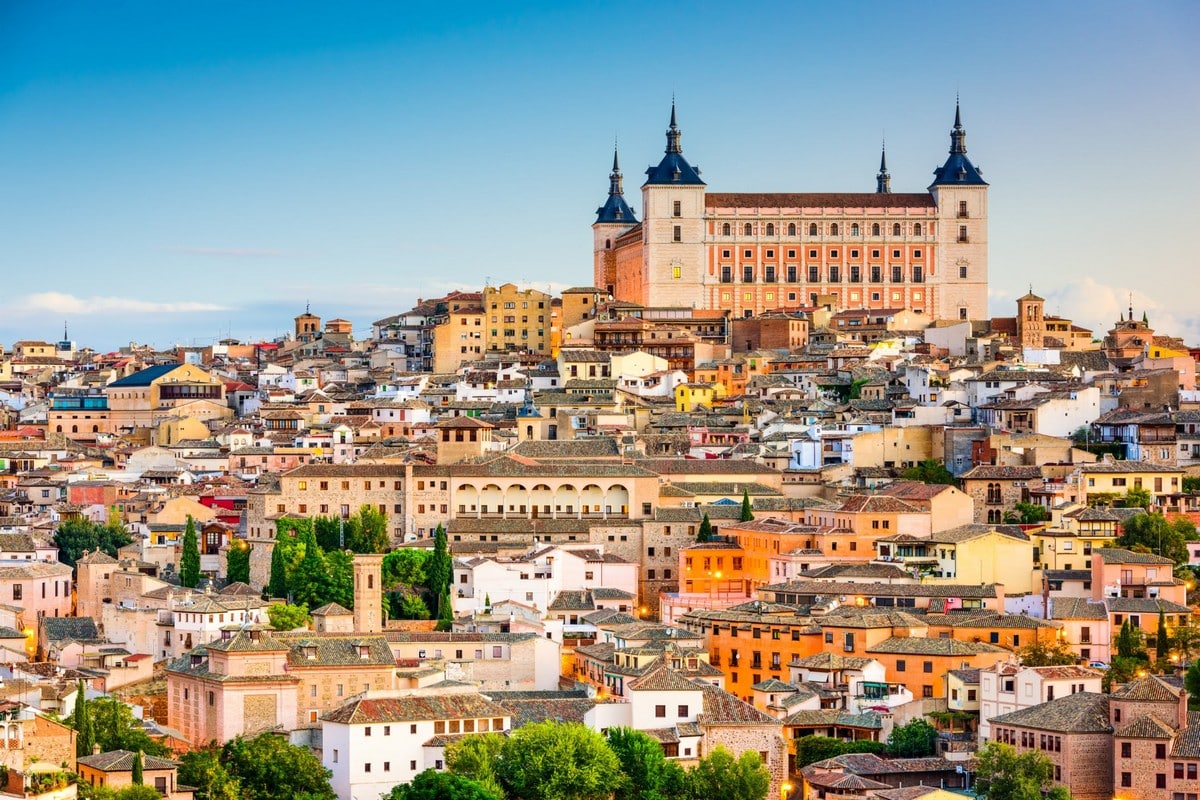Spain is a country located in southwestern Europe on the Iberian Peninsula. It has a Mediterranean climate and is famous for its beaches, cities, and historical landmarks. The country is home to some of the world’s most famous works of art, architecture, and music. The capital city of Madrid is home to the Royal Palace, Prado Museum, and Retiro Park. At the same time, Barcelona is renowned for its Gothic architecture and cultural landmarks such as the Sagrada Familia.
Spain is known for its rich cultural heritage, stunning architecture, beautiful beaches, delicious cuisine, and vibrant cities. It is the birthplace of famous artists and is home to many world-renowned museums and galleries. Spain is a popular tourist destination known for its relaxed lifestyle, vibrant nightlife, and warm hospitality.
Alhambra in Granada
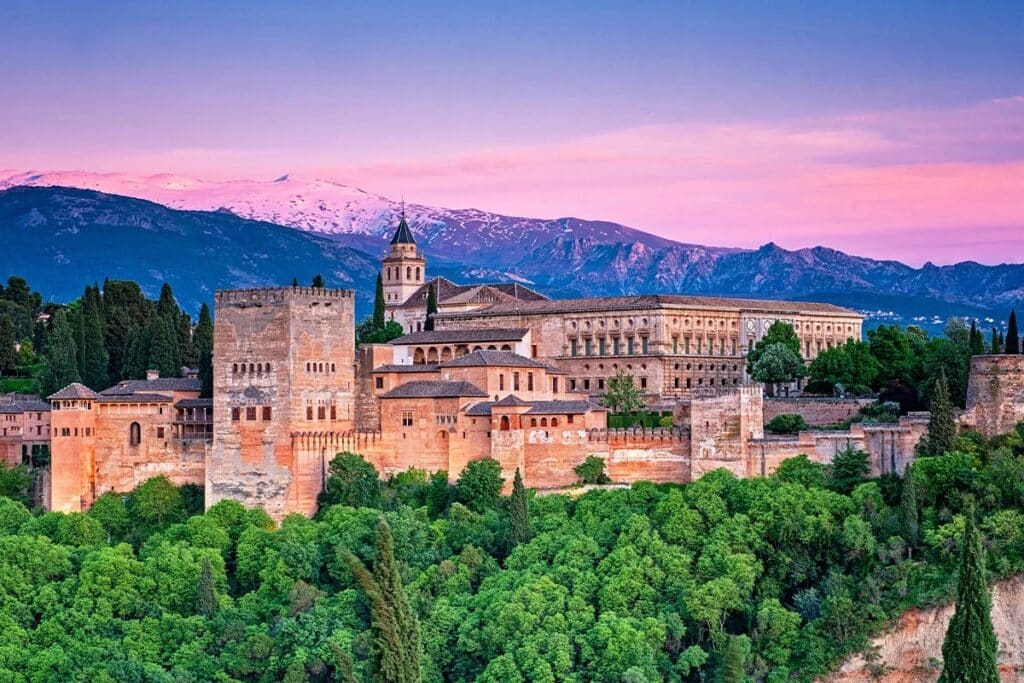
The Alhambra is a historic palace and fortress complex in Granada, Spain. It was originally built as a palace for the Nasrid sultans in the 13th century and later served as a royal palace during the Christian rule of the Kingdom of Granada. The Alhambra is known for its stunning architecture, which combines elements of Islamic and Christian styles. Visitors can explore the intricate tile work, carvings, and courtyards of the palace, as well as the Generalife Gardens, a beautiful and peaceful area filled with fountains and flower-filled courtyards.
Park Güell in Barcelona
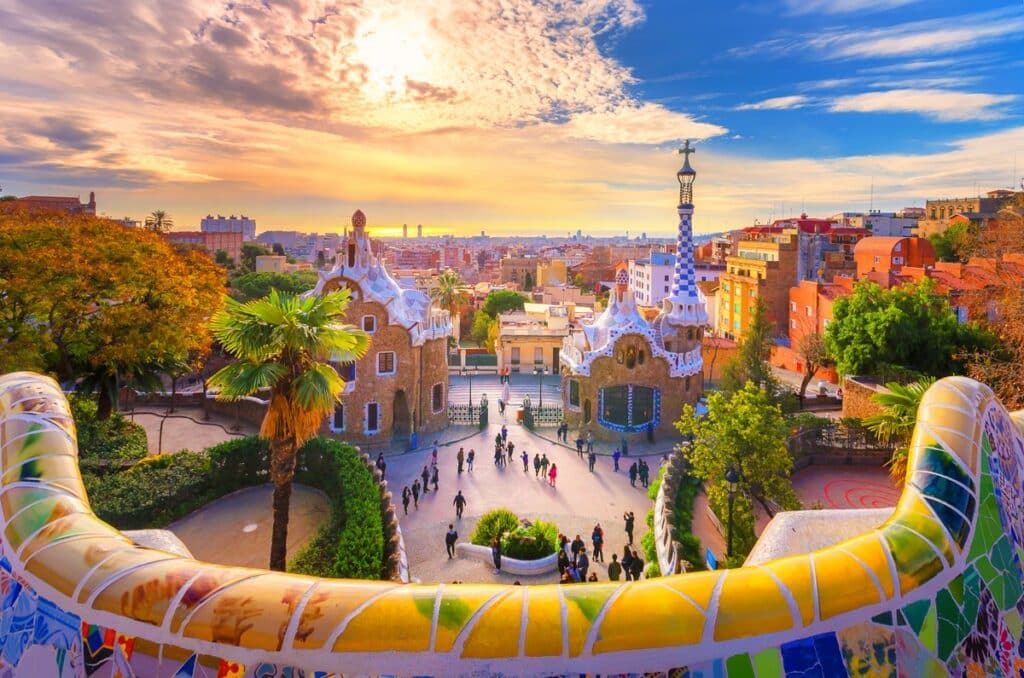
Park Güell is a public park in Barcelona, Spain, designed by the famous architect Antoni Gaudí. The park was built between 1900 and 1914 and features a variety of colorful mosaics, sculptures, and structures set against a beautiful hilly landscape. The park is a popular tourist destination and a prime example of Gaudí’s unique style, which blends Art Nouveau and Catalan Modernism elements. Visitors can explore the famous lizard fountain, the fairytale-like gingerbread house-style gatehouses, and the central terrace with sweeping views of the city.
The Sagrada Familia in Barcelona
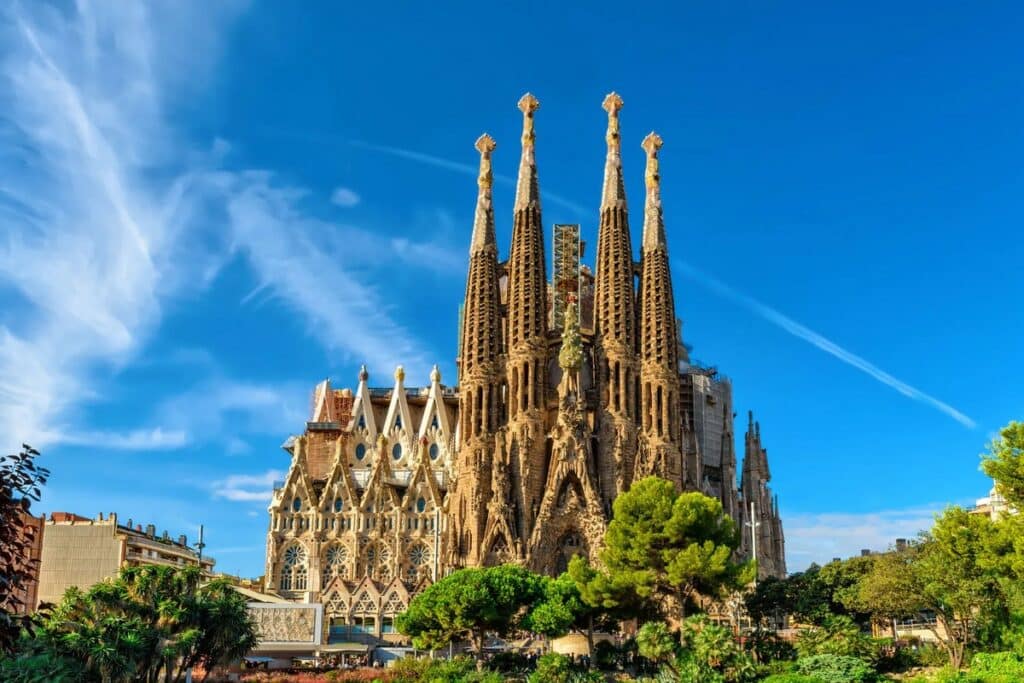
The Sagrada Familia is a stunning basilica in Barcelona, Spain, designed by Antoni Gaudí. The church was started in 1882 and remains unfinished, but it is a UNESCO World Heritage site and one of Spain’s most famous tourist attractions. The Sagrada Familia features a unique blend of Gothic and Art Nouveau styles. Its towering spires, intricate carvings, and stunning stained glass windows make it one of the most recognizable landmarks in Barcelona. The church is also known for its highly symbolic and intricate sculptures and rich history, which has been interwoven with the city’s history.
The Royal Palace of Madrid
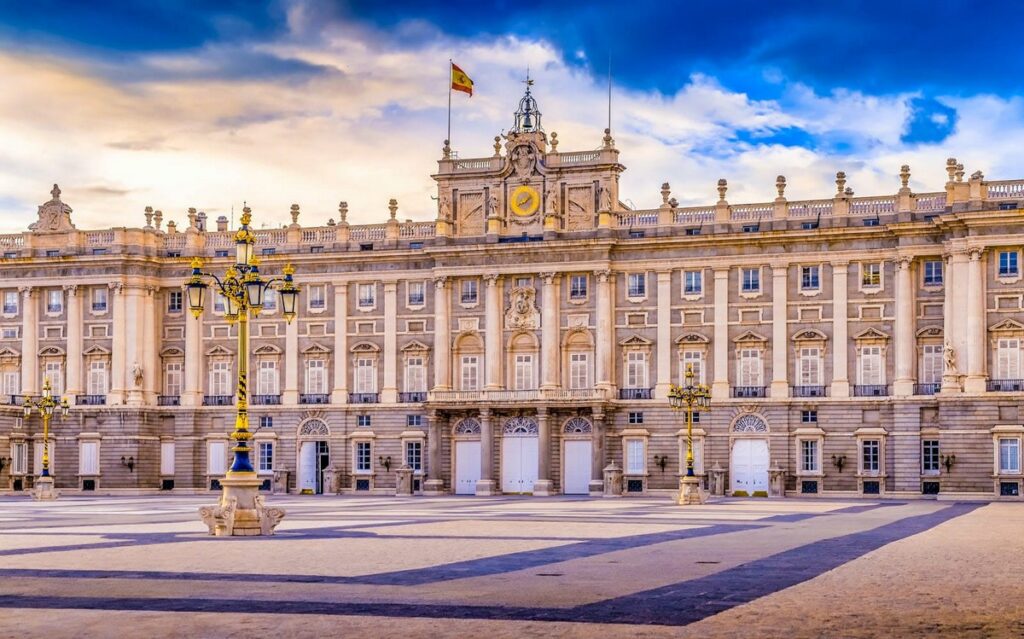
The Royal Palace of Madrid is a grand palace located in the center of Madrid. It was built in the 16th century and served as the official residence of the Spanish royalty until 1931. The palace is a stunning example of Spanish Baroque architecture and covers an area of over 135,000 square meters, making it one of the largest palaces in Europe. Visitors can admire the palace’s ornate rooms, grand halls, and beautiful gardens. It is also home to several museums, including the Royal Armory Museum, the Royal Pharmacy Museum, and the Royal Decorative Arts Museum.
Running of the Bulls in Pamplona
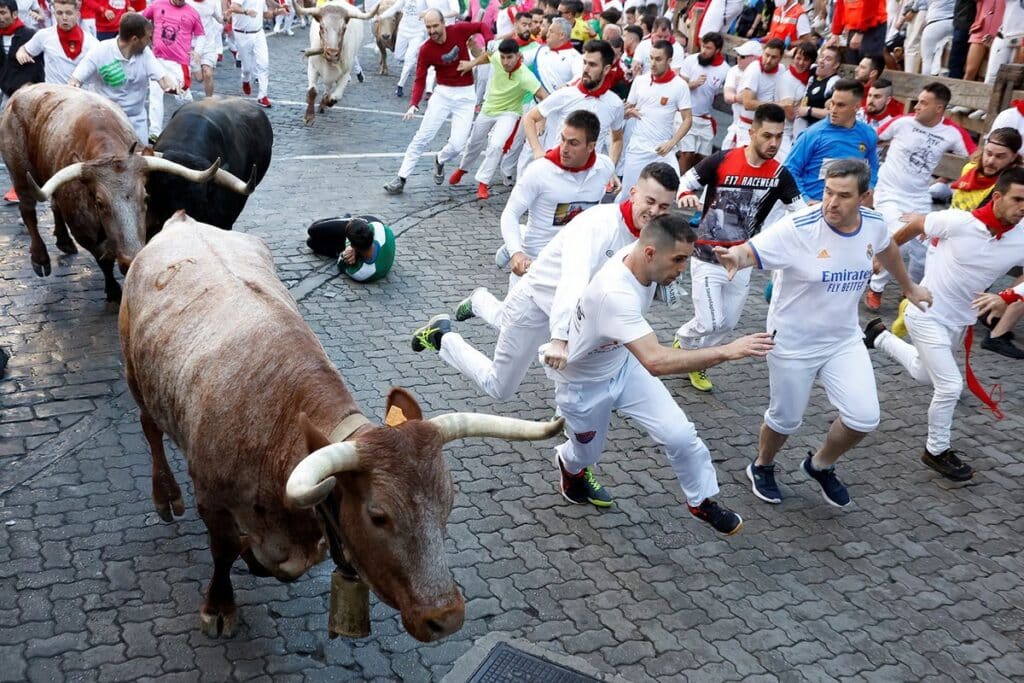
The Running of the Bulls, also known as the “Encierro,” is a famous event held annually in Pamplona, Spain. It is a part of the San Fermin festival and takes place over seven days in July. The event involves running in front of a group of bulls through the streets of Pamplona. The run starts at 8 AM and lasts only a few minutes, but it is a dangerous and thrilling experience for the participants and onlookers. The tradition of the Running of the Bulls dates back to the 14th century and is considered an important part of Spanish culture and history.
The Picturesque Beaches of Costa del Sol
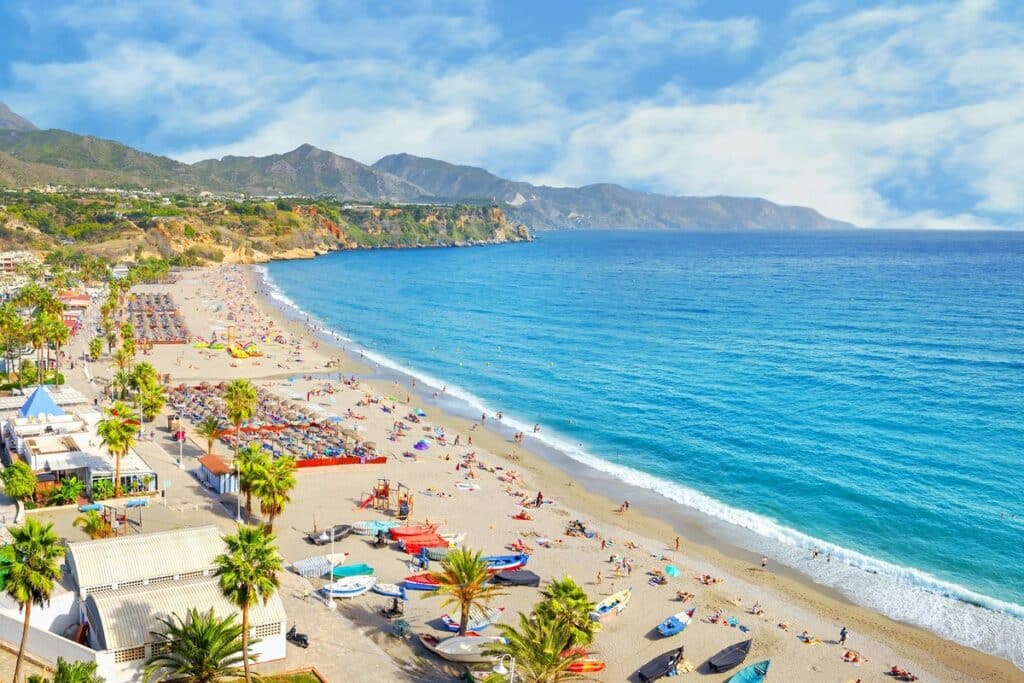
Costa del Sol is a stretch of coastline in southern Spain, known for its picturesque beaches and sunny weather. The area is a popular tourist destination, attracting millions of visitors yearly with its warm Mediterranean climate, clear waters, and soft golden sand. From secluded coves to bustling beaches, there is something for everyone here. Popular activities include sunbathing, swimming, water sports, and dining on delicious seafood. Costa del Sol is also renowned for its nightlife, with a vibrant atmosphere that continues into the early hours of the morning.
The Ancient City of Toledo
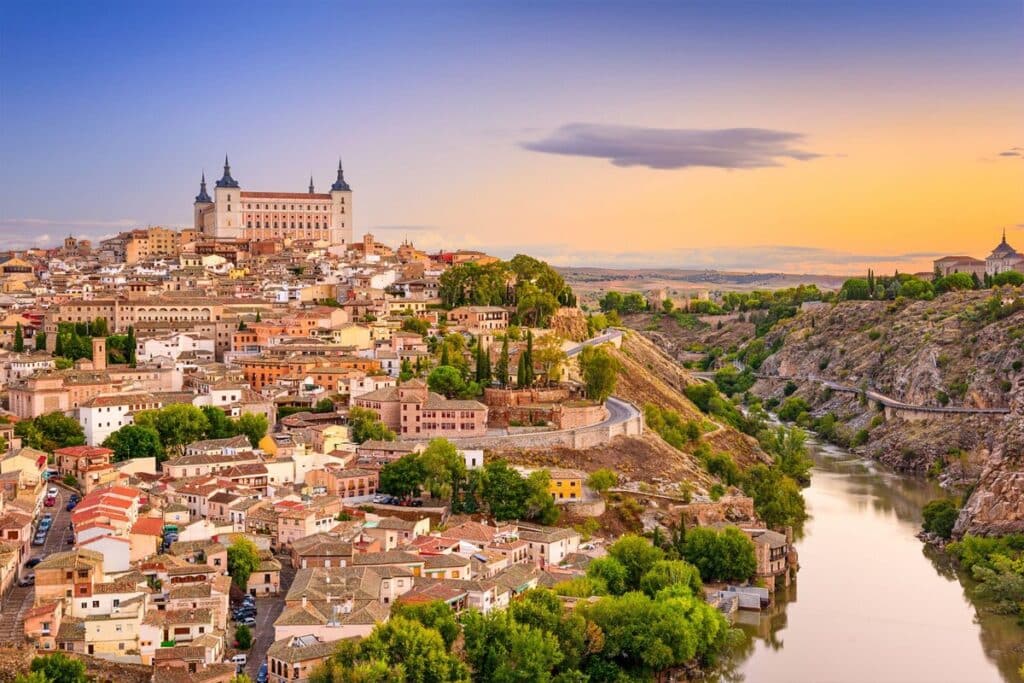
Toledo is a historic city located in central Spain. It is known for its stunning medieval architecture, including its Gothic cathedral, the Alcázar fortress, and the Church of Santo Tomé. The city is also famous for producing traditional Spanish swords and knives. The old town of Toledo is surrounded by ancient walls and is perched on a hill above the Tagus River. The city has a rich cultural heritage, reflecting its history as a former capital of the Visigothic Kingdom and its cultural mix of Christian, Jewish, and Muslim influences.
The Mezquita in Córdoba
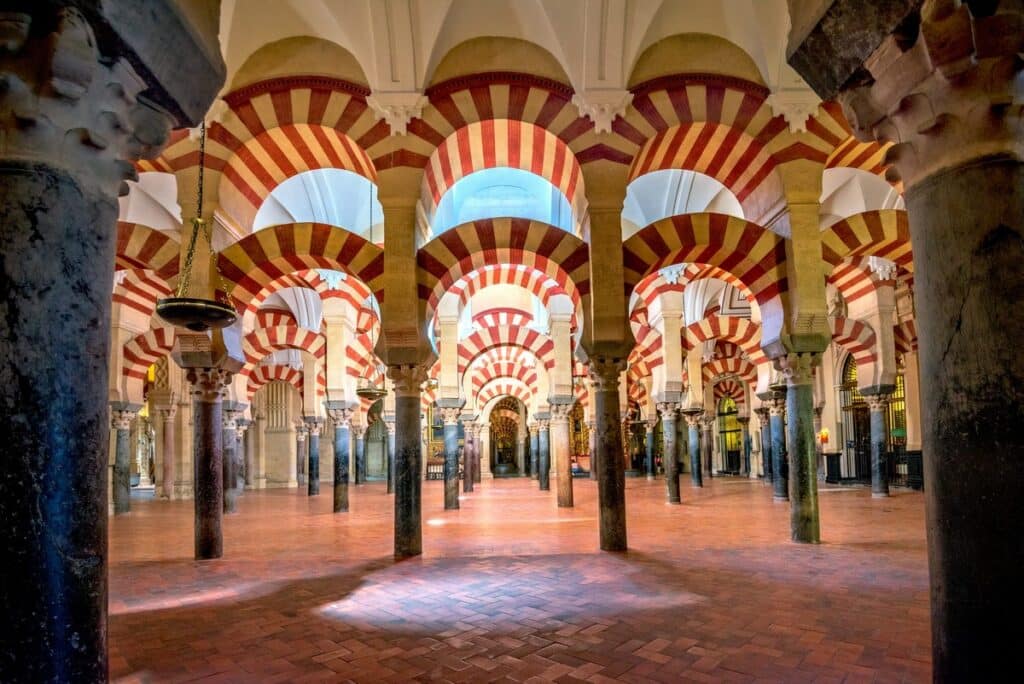
The Mezquita, also known as the Mosque-Cathedral of Córdoba, is a unique architectural marvel in Córdoba, Spain. The building dates back to the 8th century when it was built as a mosque during Muslim rule in Spain. Over the centuries, the building was transformed into a cathedral following the reconquest of Córdoba by the Christians in the 13th century. The Mezquita features a mixture of architectural styles, including the Islamic and the Gothic, and is famous for its stunning arches and horseshoe arches.
Throw Tomatoes at La Tomatina

La Tomatina is a food fight festival held annually on the last Wednesday of August in the town of Bunol. Thousands of participants gather to throw overripe tomatoes at each other, creating a colorful and messy display. The festival is said to have started in 1945 and has since grown into a major tourist attraction. Participants must follow the rules, such as only throwing tomatoes and wearing protective goggles. The festival ends with the Plaza del Pueblo being hosed down and the town cleaning up. La Tomatina is a unique and lively event that attracts visitors worldwide.
The Historic Center of Seville
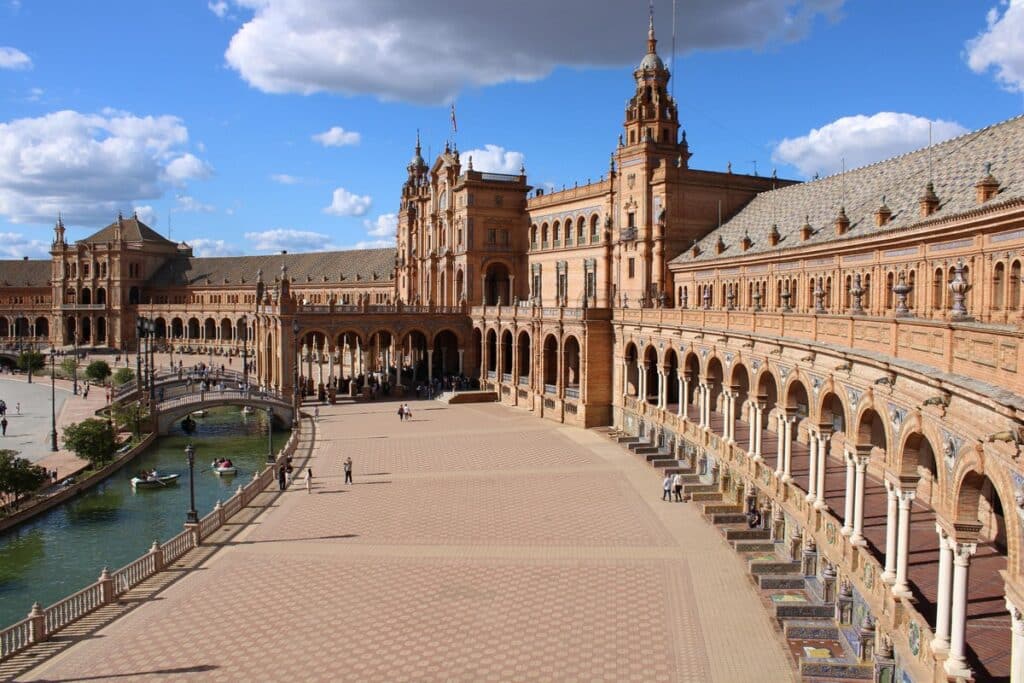
The historic center of Seville, Spain, is a UNESCO World Heritage Site known for its well-preserved architecture and rich history. The center is home to several iconic landmarks, such as the Giralda Tower, the Seville Cathedral, and the Alcázar Palace. Visitors can explore narrow, winding streets lined with traditional Spanish homes, orange trees, and quaint plazas. The Baroque-style architecture combines Gothic, Mudéjar, and Renaissance elements, creating a unique aesthetic. In addition, Seville is famous for its flamenco dancing and lively atmosphere, making it a popular tourist destination for those interested in Spanish culture.
Flamenco Dance Class in Seville
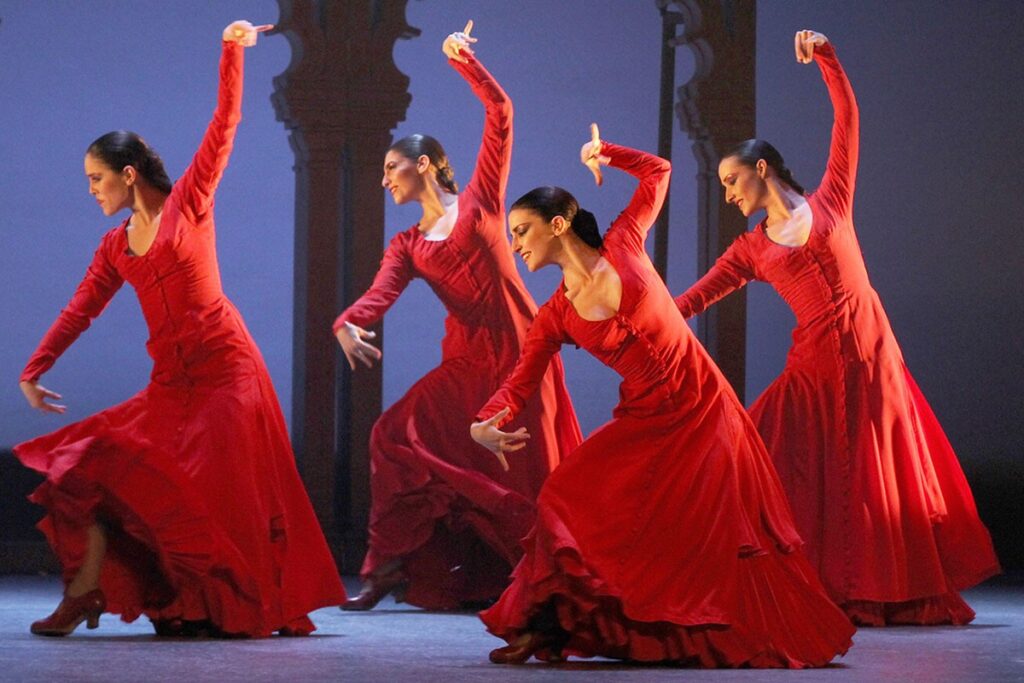
Flamenco dance classes in Seville offer a unique cultural experience, immersing visitors in the passionate art form of flamenco. Originating from Andalusia, flamenco is a style of Spanish music and dance characterized by rhythmic hand clapping, percussive footwork, and expressive arm movements. Classes in Seville typically occur in traditional dance studios, where professional instructors lead participants through various flamenco steps, routines, and cultural contexts. Whether you are a beginner or an experienced dancer, these classes provide an opportunity to learn about Spain’s rich cultural heritage and even perform for friends and family.
Wine-Tasting Tour in La Rioja

La Rioja is a region in northern Spain famous for its wine production. A wine-tasting tour in this region is a great opportunity to sample and learn about some of the finest wines in the country. The tour typically includes visits to local wineries, where you can see the wine-making process, taste the wines, and learn about the different varieties, terroirs, and the history of wine-making in the region. La Rioja is also known for its picturesque villages and rolling hills, making it a perfect destination for a scenic and cultural tour.
The Catedral de Santa María in Santiago de Compostela
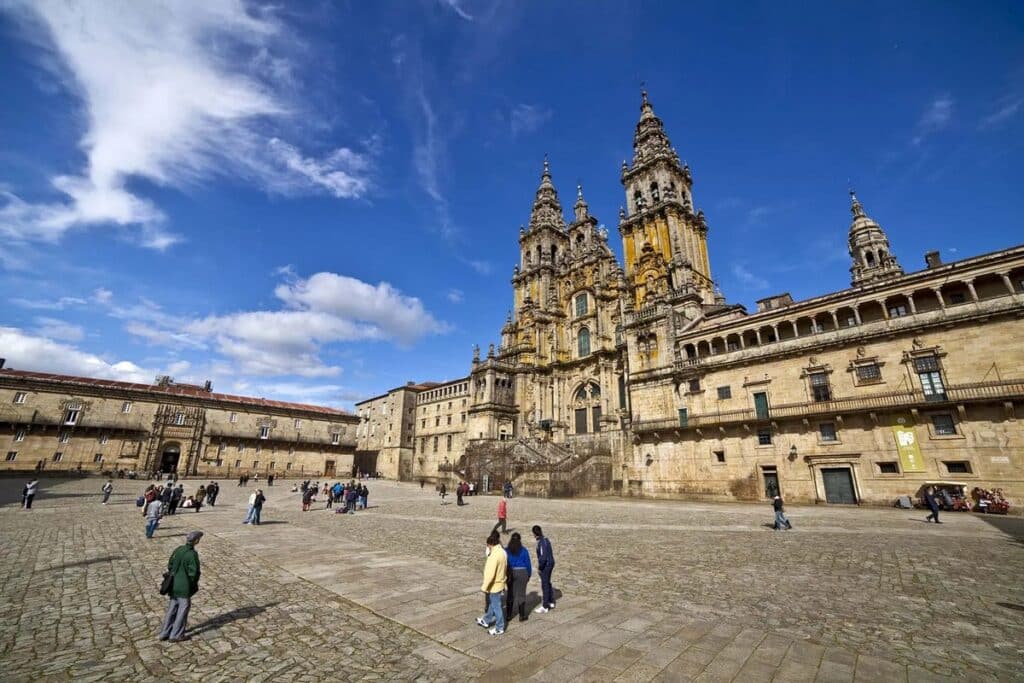
The Catedral de Santa María in Santiago de Compostela, Spain, is one of the country’s most famous and important pilgrimage destinations. The cathedral is said to house the remains of the apostle Saint James and has been a popular site for pilgrimage for over a thousand years. The cathedral is known for its stunning baroque façade, ornate chapels, and the beautiful botafumeiro, a massive incense burner. The cathedral is also the end point of the Camino de Santiago, a network of pilgrimage routes that run across northern Spain, and is a symbol of Spanish culture and history.
Rich and Diverse Spanish Cuisine
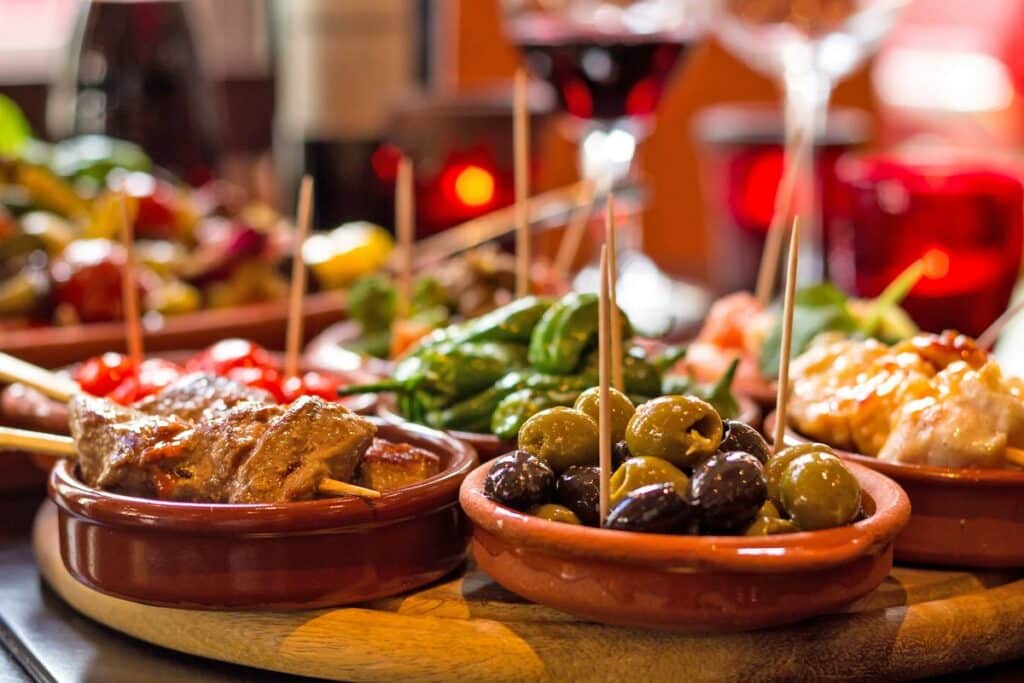
Spanish cuisine is known for its rich and diverse flavors, combining ingredients and cooking styles from various regions of the country. Some popular dishes include paella, a rice dish with seafood, chicken, or vegetables; tapas, small plates of food served with drinks; and tortilla, a thick omelet made with potatoes and onions. Spanish cuisine also features a wide range of cured meats such as chorizo, serrano ham, and salami, as well as seafood, stews, and hearty soups. Spain is famous for its wine, with regions like Rioja producing high-quality red wines.
The Gothic Quarter in Barcelona
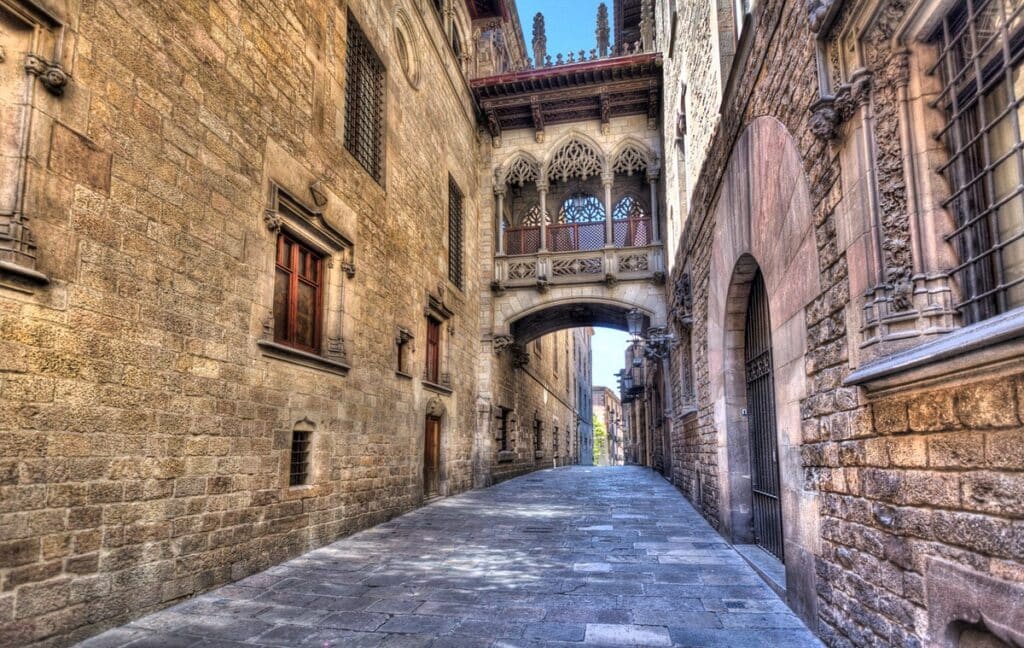
The Gothic Quarter in Barcelona is a historic neighborhood in the city’s heart. It’s known for its narrow winding streets, historic buildings, and monuments and for being the birthplace of Catalan culture. The Gothic Quarter is famous for its Gothic architecture, including its stunning cathedral, the Cathedral of Santa Maria del Mar. The area is also home to several historic squares, including Plaça del Rei and Plaça Sant Jaume, surrounded by medieval buildings and monuments. Visitors can explore the Gothic Quarter’s museums, galleries, and shops and sample traditional Catalan cuisine in one of its many restaurants.
The Picasso Museum in Barcelona
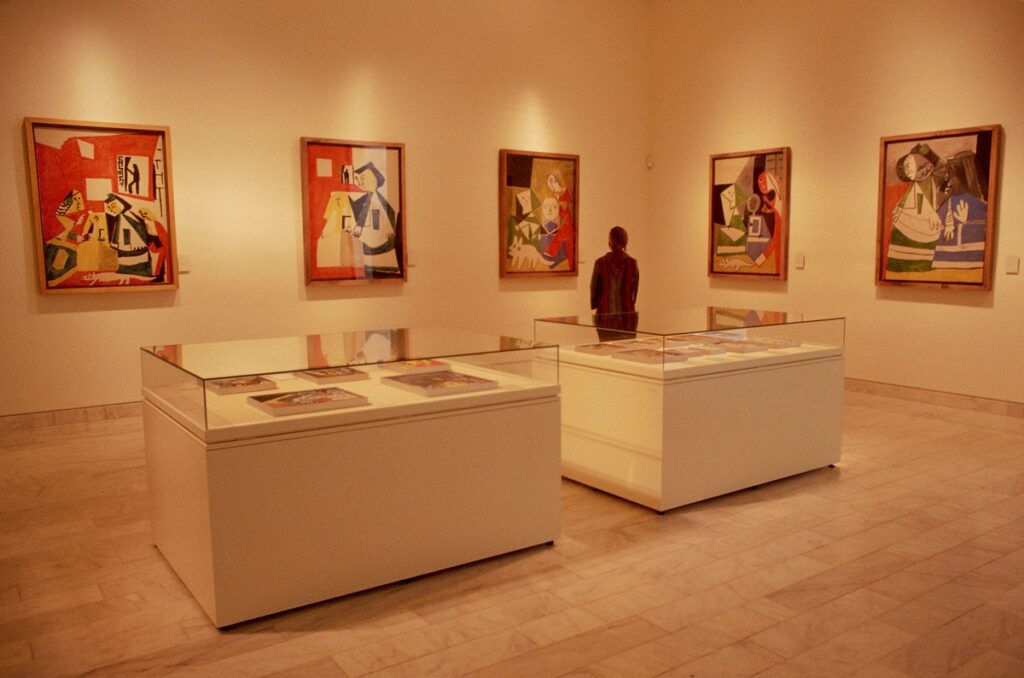
The Picasso Museum in Barcelona is a world-renowned museum dedicated to the works of Pablo Picasso, one of the most influential artists of the 20th century. The museum is located in the heart of the Gothic Quarter and features over 4,000 works, including paintings, sculptures, ceramics, and drawings. Visitors can explore Picasso’s formative years in Spain, his move to France, and his later works, including his famous “blue” and “rose” periods. The museum offers a comprehensive look at Picasso’s artistic development and major contributions to the world of art.
The Alcázar of Seville
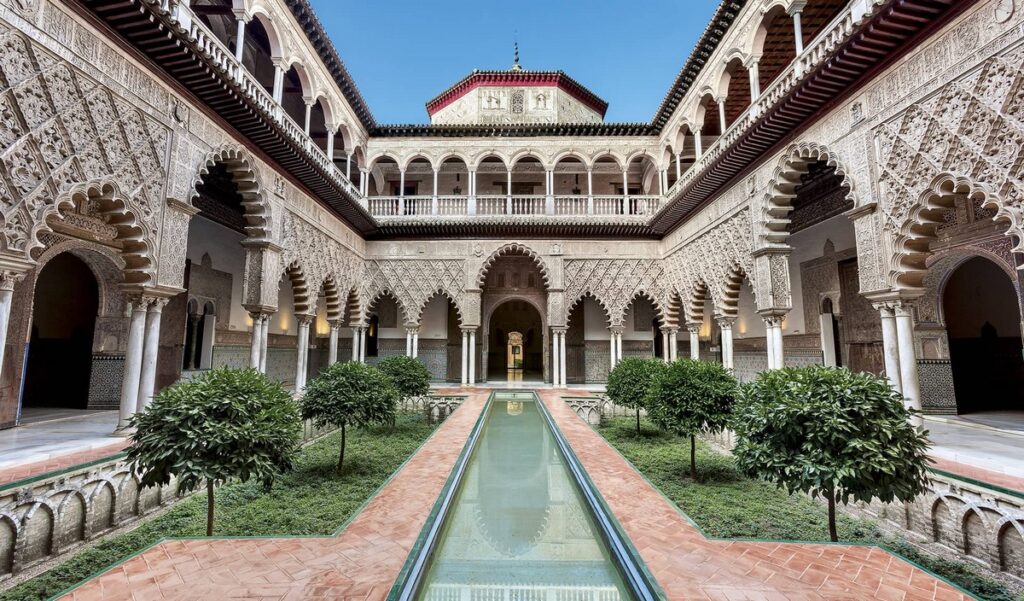
The Alcázar of Seville is a royal palace in the heart of Seville, Spain, originally built as a fort in the 10th century. Over the centuries, it has undergone multiple transformations, with elements from various architectural styles, including Gothic, Renaissance, and Mudéjar. The palace is well-known for its beautiful courtyards, intricate tile work, and its Mudejar Palace, with its elaborate stucco decoration, horseshoe arches, and ornate doorways. The Alcázar has been used as a royal palace and military academy. Today, it serves as a museum showcasing Seville and Spain’s rich history.
The Reales Atarazanas in Málaga
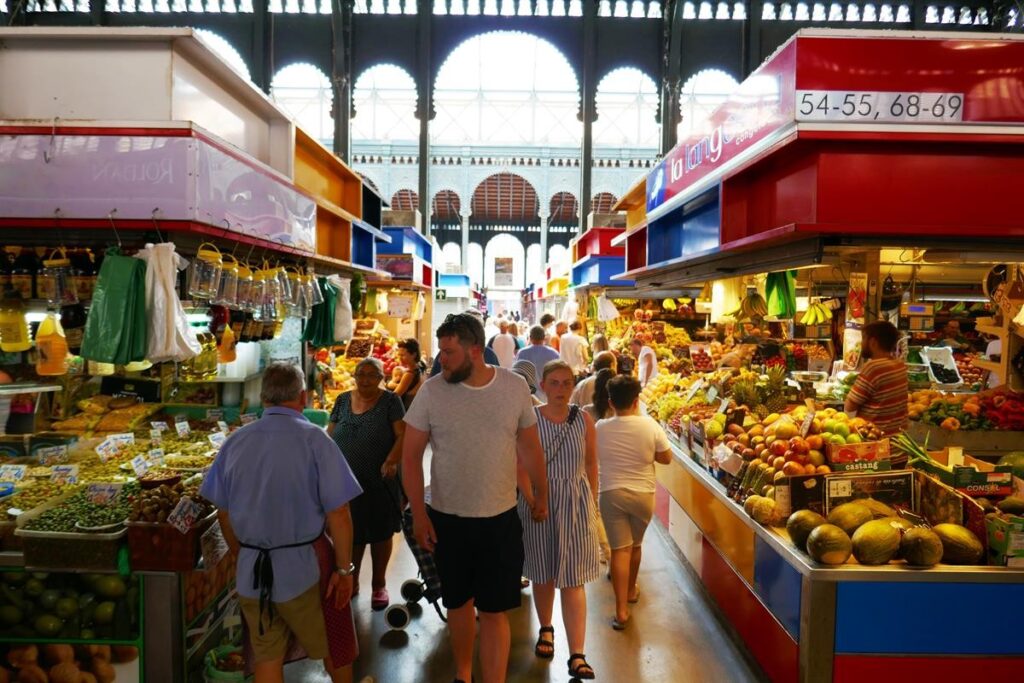
The Reales Atarazanas is a former shipyard located in the port area of Barcelona, Spain. Built in the 13th century, the complex served as the main shipbuilding center for the Kingdom of Aragon. It was also a storage area for ships, weapons, and ammunition. Today, the Reales Atarazanas serves as a cultural and exhibition center, showcasing the city’s maritime heritage history. Its impressive Gothic arches and brick walls offer a glimpse into medieval architecture, while its exhibitions and events provide insight into the rich history of the port of Barcelona.
The Medieval Town of Ronda
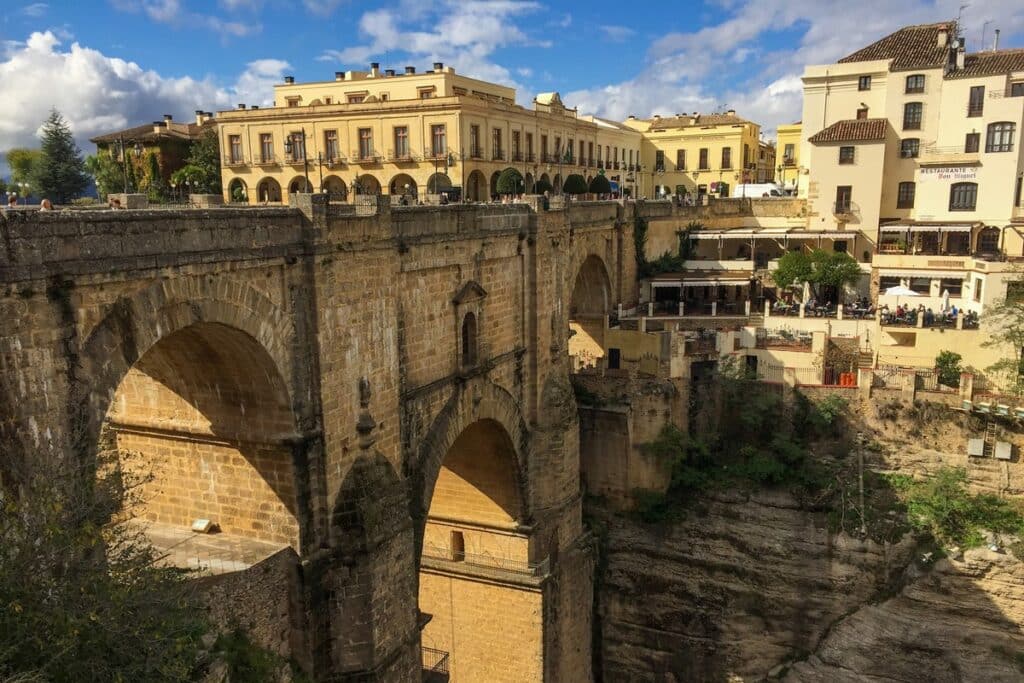
Ronda is a medieval town located in the province of Málaga, Spain. It is known for its stunning views of the surrounding mountains and valleys and its historic bridge, Puente Nuevo, which spans a deep gorge and offers breathtaking views of the town below. Ronda is also home to several ancient monuments, including the Mondragon Palace, the Church of Santa Maria la Mayor, and the 16th-century Arab Baths. Additionally, Ronda is famous for its bullfighting tradition and its charming, narrow streets lined with whitewashed houses and shops selling local crafts and souvenirs.
Tapas Crawl Through Madrid
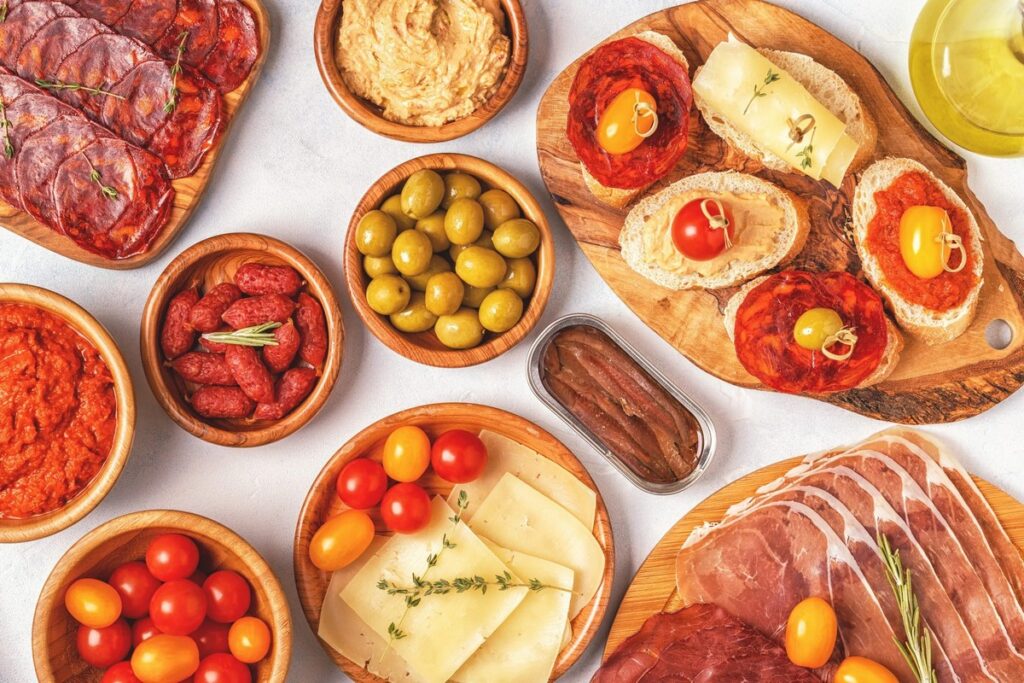
A tapas crawl through Madrid is a culinary adventure where travelers explore the city’s historic neighborhoods and sample its famous bite-sized dishes. It is a great way to immerse oneself in the local culture and experience the traditional Spanish way of life. Participants can visit various bars and cafes, trying a variety of tapas like patatas bravas, croquetas, and cured meats, paired with local wine, sherry, or beer. The crawl can be done with a group or solo and is a perfect way to spend an evening sampling delicious food and soaking up the lively atmosphere of Madrid’s streets.
